After Sony and Philips reached an agreement on the Compact Disc Digital Audio after 6 meetings, they officially presented the format in a press conference held at the Plaza Hotel in New York on may 27, 1981.
This document is part of the Philips/Sony press kit which was specially prepared for the New York press conference.
The 1981 Philips/Sony press kit also includes:
Compact Disc Digital Audio represents a revolution in consumer electronics equipment. Now the unique advantages of digital data processing will be available to a broad spectrum of audio enthusiasts.
Superior sound quality is one of the most important benefits of the Compact Disc. Consider some of its important speci- fications:
- Signal-to-noise ratio is more than 90 dB.
- Dynamic range is greater than 90 dB.
- Flat frequency response is 20-20,000 Hz.
- Stereo channel separation is greater than 90 dB.
- Harmonie distortion is less than 0.05%.
- No rumble.
- No wow or flutter.
- No intermodulation.
Two-Way Protection Against Normal Audio Disturbances
The Compact Disc, which has a diameter of 4.7 inches (12 cm), consists of metalized plastic encapsulated in a transparent protective coating. The disc is immune to external in- fluences such as dust, scratches, or improper handling. This precludes the need for special care in use or storage of the discs.
![Philips/Sony press kit 27 May 1981 New York]()
The Compact Disc has enormous storage capacity and the digital reproduction circuitry has a built-in error detection and correction system. This automatically adapts to deviations and prevents wow and flutter or drop-outs associated with con- ventional recordings.
60 Minutes Uninterrupted Playing Time
One side of a Compact Disc contains enough stereo sound Infor mation for a full hour of uninterrupted playing time, and the system is designed to accommodate 4-channel recordings at reduced playing time. Compact Discs rotate counterclockwise and are played from the center outwards. Disc rotation speed is variable and is controlled by the information bits encoded on the disc itself. Theoretically, the Compact Disc may be recorded on both sides.
Digital-Sound Pulse Taker
In digital recording, the original sound wave-form is sampled thousands of times per second and each of the samples is assigned a numeric value. The 44.33kHz sampling frequency is derived from a 4.433Mhz crystal, assuring maximum accuracy.
These samples are then quantized and converted into binary 16-bit "words" through a technique called Pulse Code Modulation (PCM). The bits — or smallest possible segments — permit extremely precise description of each sound sample.
The hour-long CD recording is made up of six billion bits, linearly encoded along the helical track of pits (which are about 0.6 micron in width and about 0.2 micron deep) and flats. These represent "ones" and "zeros" in binary computer language, and the extraordinarily high density of information assures an exact reproduction of the original sound.
The solid state laser pick-up scans this sequence of pits and flats from below in the form of a concentrated light spot several times thinner than a human hair. Scanning rate is approximately 4.3 million bits per second. Response is at the speed of light. With no contact between laser pick—up and disc, record wear is eliminated.
Totally New Handling Characteristics
Storage capacity of the Compact Disc - over 8 billion bits per side - is far greater than necessary to contain the sound information for 60 minutes of playing time. This provides infinite possibilities for hifi designers, in devising new concepts in handling ease and versatility for CD players. There are already plans to make it possible to indicate number, length, sequence, title and even the texts of songs recorded on the disc via luminescent display or TV monitor.
Owners of Compact Disc players will be able to make use of sophisticated programming circuitry, enabling them to determine which songs they desire to hear in any sequence. Handling of CD players will be easier - and at the same time more versatile than current cassette players.
CD is Compatible
The Compact Disc system developed by Philips and Sony utilizes the same 16-bit PCM code now in use for professional digital audio purposes. Therefore, CD recordings can be made with existing PCM equipment. It is also possible to adapt existing analog recordings through PCM processors to the CD Standard.
This is an important consideration in view of the enormous number of recordings - many of historie value - already avail- able in conventional phonograph record versions. CD players will connect directly to any conventional hifi system. The necessary analog output interface electronics are an integral part of the player. The development of semiconductor chip integrated circuits by Philips and Sony were prerequisite to economie mass production of CD players.
![Philips/Sony press kit 27 May 1981 New York]()
Superior Specifications
The specifications for the Compact Disc system surpass those of conventional record players by far - a direct result of digital technology superiority.
No Wow and Flutter
To maintain a constant linear velocity as a low-power, solid-state laser pick-up scans the digital track, the rotation speed of the disc continuously varies (from 500 rpm at the inside to 200 rpm at the outside end). Tracking, decoding and rotation speeds are precisely synchonized with a central clock generator, which itself is governed by information encoded in the track on the disc. As a result, wow and flutter are no longer measurable.
True Dynamic Range
With optical scanning via solid-state laser there are absolutely no mechanic or electromagnetic limitations on either frequency response or dynamic range. It is therefore possible to reproduce the full dynamic range of 90 dB experienced.
![Philips/Sony press kit 27 May 1981 New York]()
Widest Channel Separation
The CD laser pick-up reads both stereo channel signals alternately instead of simultaneously as in conventional record players. Together with the error correction cir cuits mentioned above, cross talk is no longer possible in the CD system. Channel separation specifications exceed 90 dB compared to a maximum of 35 dB for very good con ventional record player cartridges.
Negligible Noise
In digital audio, signal-to-noise ratio depends on the number of bits per "word". In the CD system each bit con- tributes about 6dB to the accuracy of signal reproduction. Thus, a remarkable s/n ratio of over 90dB is attained. Any noise heard while listening to a CD record either sterns from the original recording or from some other com ponent in the hifi system.
Compact Disc Digital Audio System (CD)
General Specifications:
- Frequency Response: 20 to 20000 Hz
- S/N Ratio: More than 90dB
- Dynamic range: More than 90dB
- High frequency distortion rate: Less than 0.05%
- Wow flutter: 0%
- Playing time: 60min.
- Disc diameter: 4.7in (12cm)
![Philips/Sony press kit 27 May 1981 New York]()
![Philips/Sony press kit 27 May 1981 New York]()
![Philips/Sony press kit 27 May 1981 New York]() Philips/Sony press kit 27 May 1981 New York
Philips/Sony press kit 27 May 1981 New York
The 1981 Philips/Sony press kit also includes:
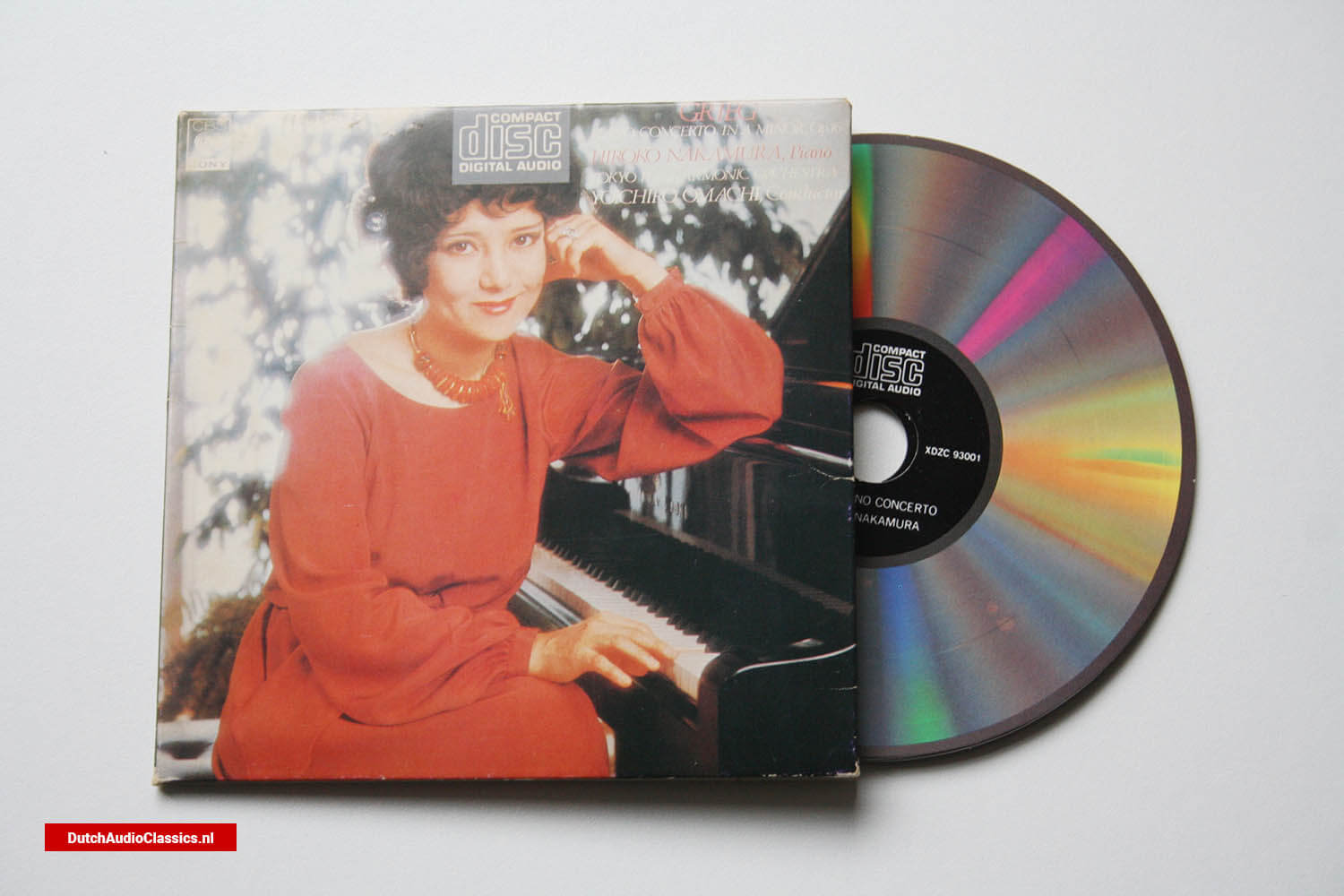


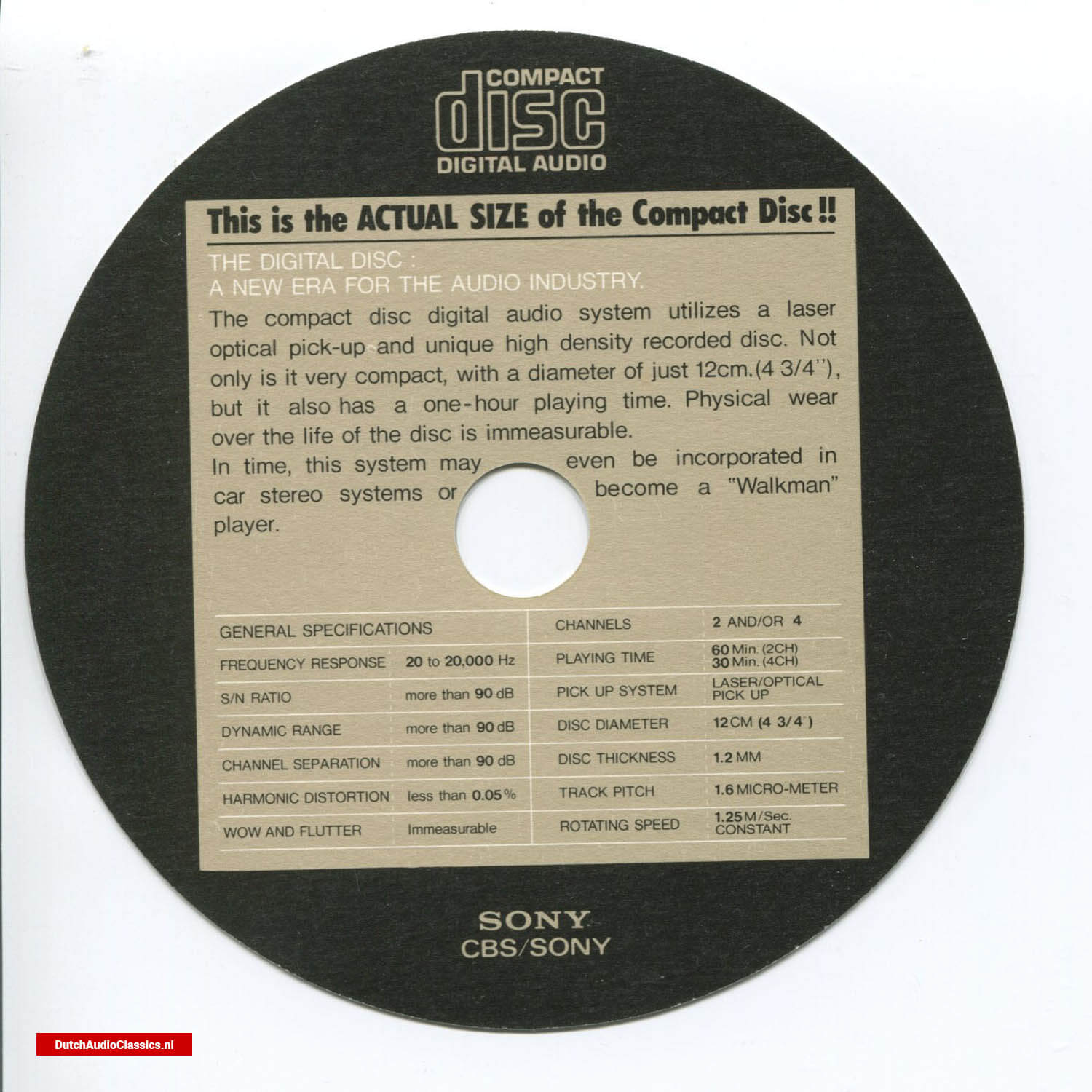
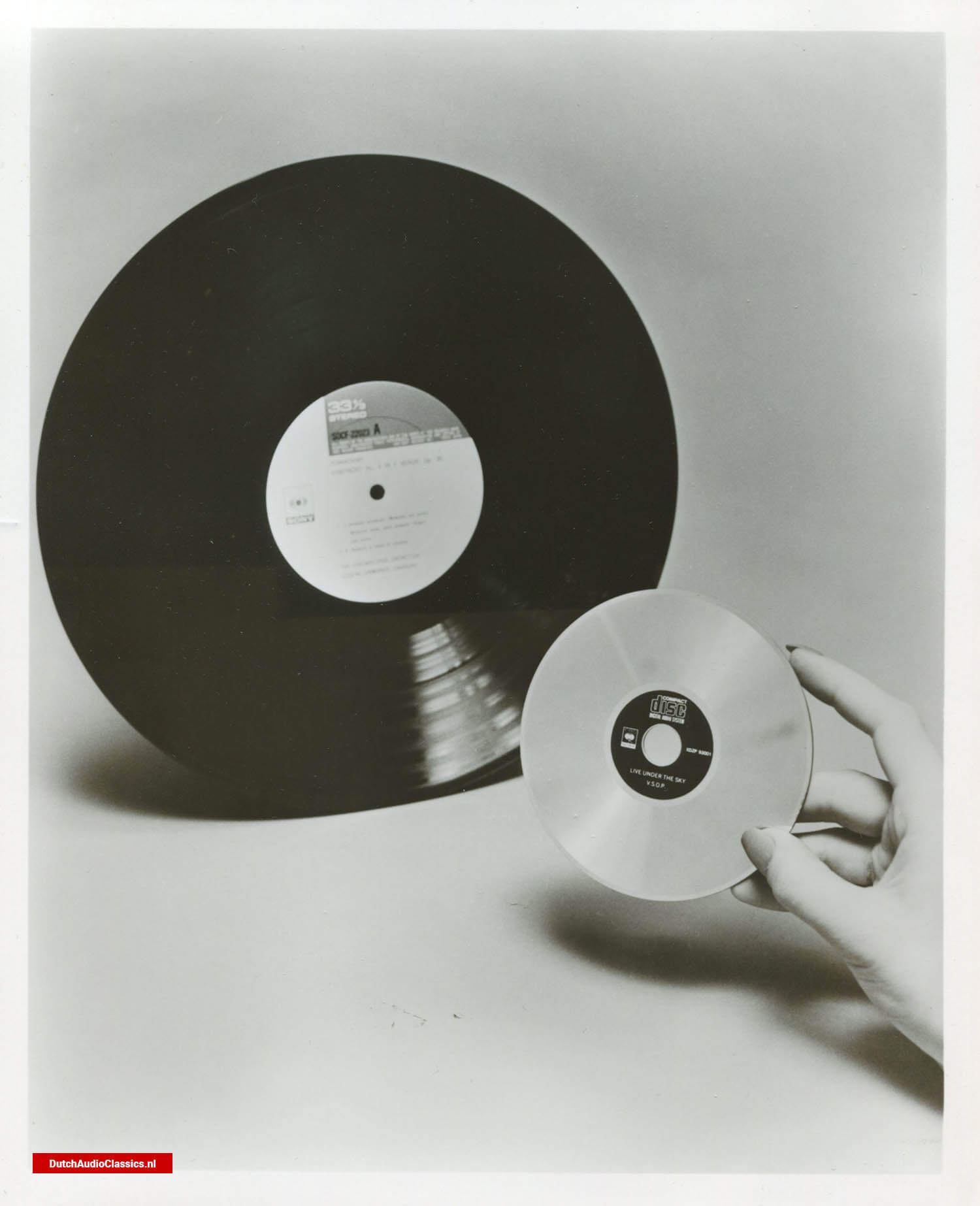
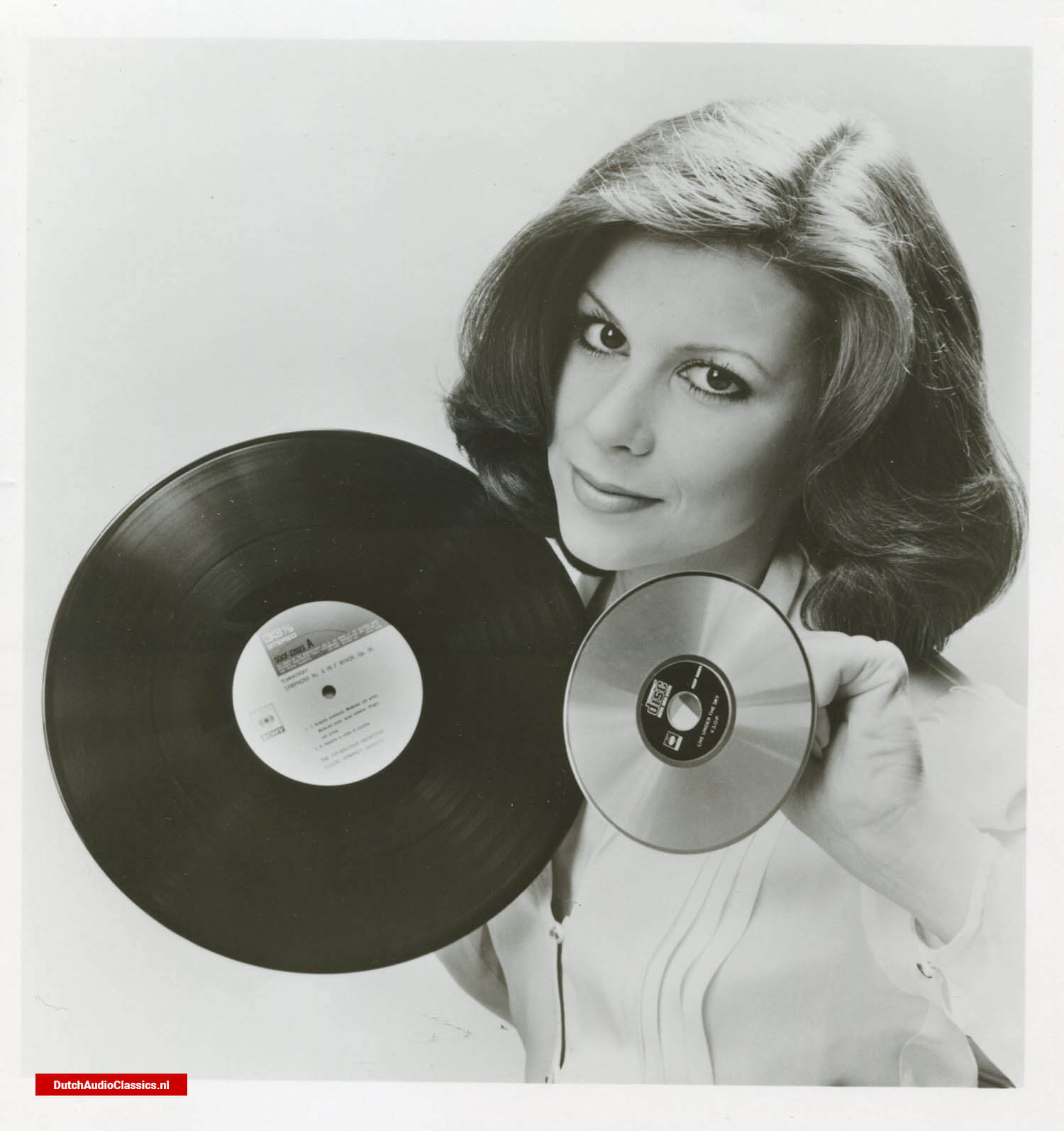

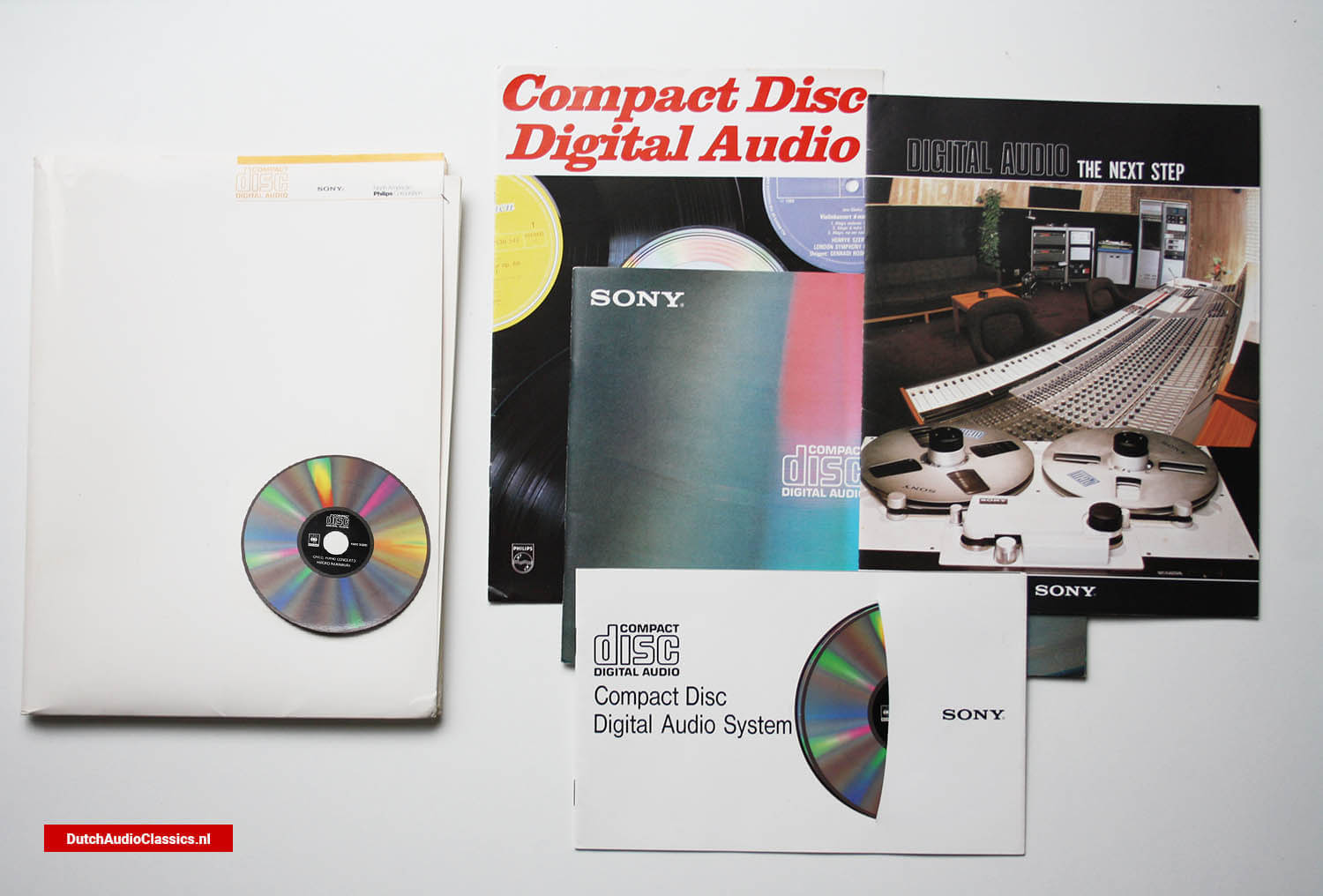
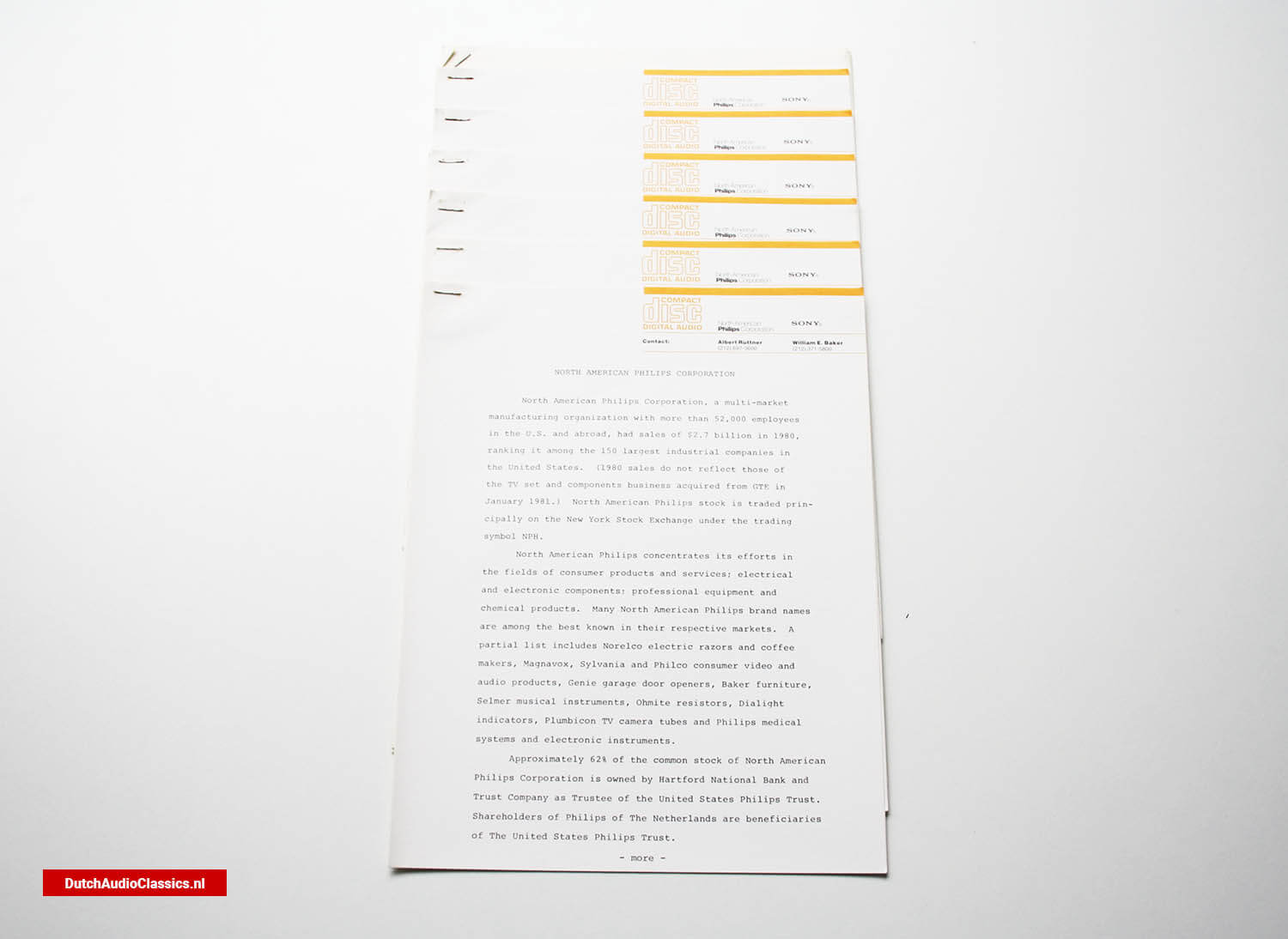 Philips/Sony press kit 27 May 1981 New York
Philips/Sony press kit 27 May 1981 New York